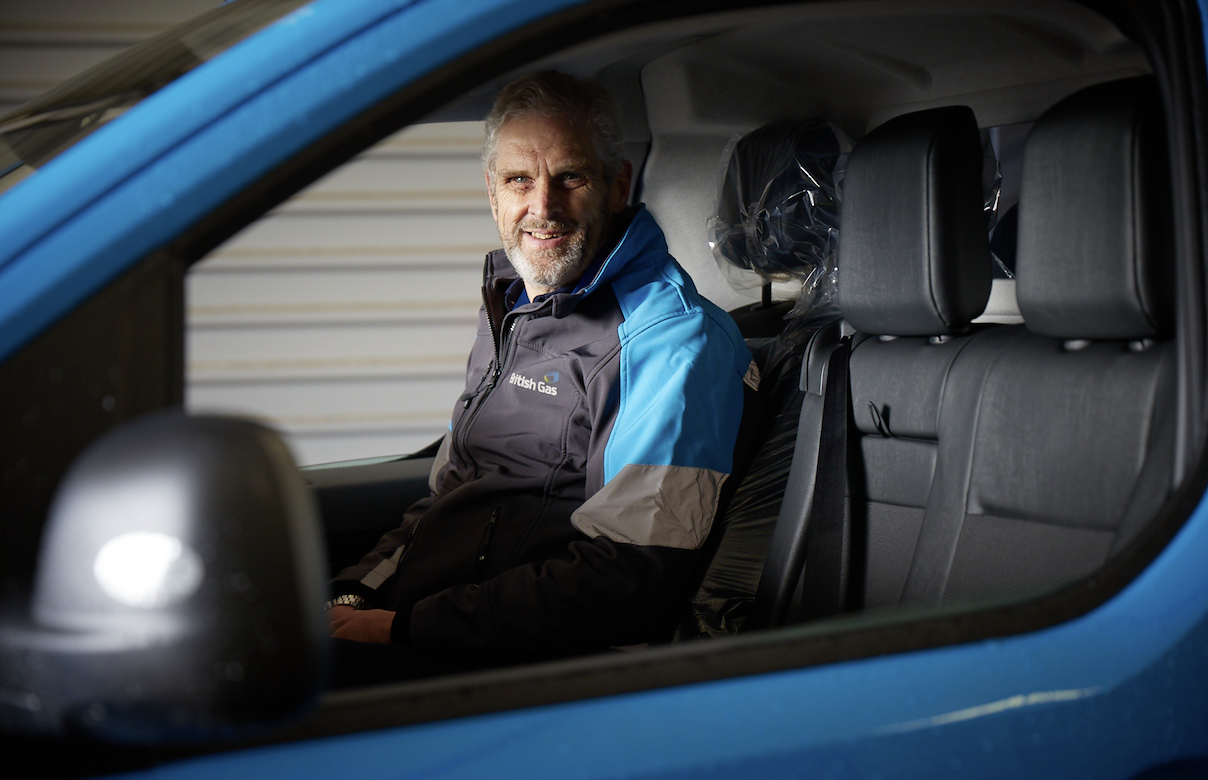“We look at every fleet decision through an EV-first lens”

Steve Winter, head of fleet at Centrica – the parent company of British Gas, chats to GreenFleet about the company’s electric vehicle journey and what lessons have been learnt
Tell us about your existing electric vehicle fleet
At Centrica we operate the third largest private fleet in the UK, with over 12,000 vehicles on the road. This includes around 9,000 engineer vans used to support our business and customers across the UK, 1,500 company cars and a 2,000-strong grey fleet.
We have committed to fully electrifying the fleet by 2025. We have more electric British Gas vans on the road than any other UK organisation, with nearly 700 Vauxhall Vivaro-es being driven by engineers and a total of 3,000 set to be delivered by the end of 2022.
We’ve recently launched our fully-electric salary sacrifice scheme, which is open to all employees. We’ve had more than 100 orders from across the business which is extremely encouraging. As part of the scheme, employees also have the option to have a charge point installed at their home.
The company has an aim to make all of its vehicles electric by 2025 – how is this looking? Are there any barriers to overcome first?
We’re on track to hit our 2025 target, which is largely down to being an early adopter of electric vehicles. We’ve been on our EV fleet journey since 2014 when we had 100 vehicles delivered for use across various engineer roles. Since then, we’ve been able to learn and adapt our approach to phasing out older, more polluting vehicles for cleaner alternatives. A large part of this success has been bringing our workforce along the journey with us and educating them on the benefits that come with running an electric vehicle.
However, it hasn’t been without its challenges, especially because there isn’t the availability of electric vehicles currently to fit every area of the business. Where possible, we look at every fleet decision through an EV-first lens. For those areas where a diesel vehicle is currently preferred, we’re making sure the lease length is no more than three years so that the vehicles can be renewed for an electric alternative before our 2025 deadline.
Where are the vehicles charged?
We know that around 40 per cent of our workforce will have the technology installed to charge their electric vehicles at home.
The other 60 per cent is more difficult. I’m an advocate of the need for large organisations like ours to work together to develop a fleet charging network. By that I mean a network available to commercial drivers whereby they can book a regular, reliable timed appointment to charge. And overnight, there will be a large number of workplace chargers, sitting empty, these fleet could get a return on their investment if they opened up their car parks at different times.
How that charging is reimbursed is a further challenge. We have developed a virtual fuel card which features bespoke payroll integration software, allowing our employees to be reimbursed for the charging costs.
When we started our EV journey, we asked for volunteers to have an EV charge point installed at their home. We had well over 1,000 people come forward. Giving our employees, especially our engineers, the ability to charge at home – either during the night or at weekends – allows us to keep our fleet moving and attend to the needs of our customers.
How were the electric vehicles initially received by the drivers, and have perceptions changed?
Offering our drivers end-to-end support for their EV experience has been crucial to encourage uptake. When our first 100 EVs were delivered in 2014, we rented a test track from Nissan and allowed our senior leaders to experience driving an electric car and answer any technical questions they had. Since then, driver onboarding has been central to our adoption plans, in order for us to get the best use out of the vehicles.
We have developed an online driver training module that is delivered to drivers prior to receiving their new EV, which is further supported by a range of videos showing them how to get the best from the vehicles and the way to store tools and equipment. Additionally, there is a driver helpdesk should drivers have any concerns prior to receiving their vehicle or when in use.
British Gas has an interesting apprenticeship scheme to train people in EV charging – how important is this?
Upskilling people around the country is crucial to the UK’s green industrial revolution. Our commitment to hire and train 3,500 apprentices who will go on to install the electric vehicle charge-points we need across the country is an important step if we are to achieve our sustainability targets.
What’s more, it’s great to see the number of young people that are embarking on their apprenticeship journey. As new technology like electric vehicles becomes more mainstream, we need to encourage the next generation of our workforce to learn and adopt these types of technology.
What advice would you give to other companies that are looking to switch to electric vehicles?
The total cost of ownership model has been central to the British Gas electric vehicle strategy. My biggest piece of advice would be to understand your fleet’s total cost of ownership inside out and ensure it includes all associated expenses, such as energy prices and plug-in grants. Otherwise, any decision to increase the size of your EV fleet could end up costing you more money than you originally planned.






